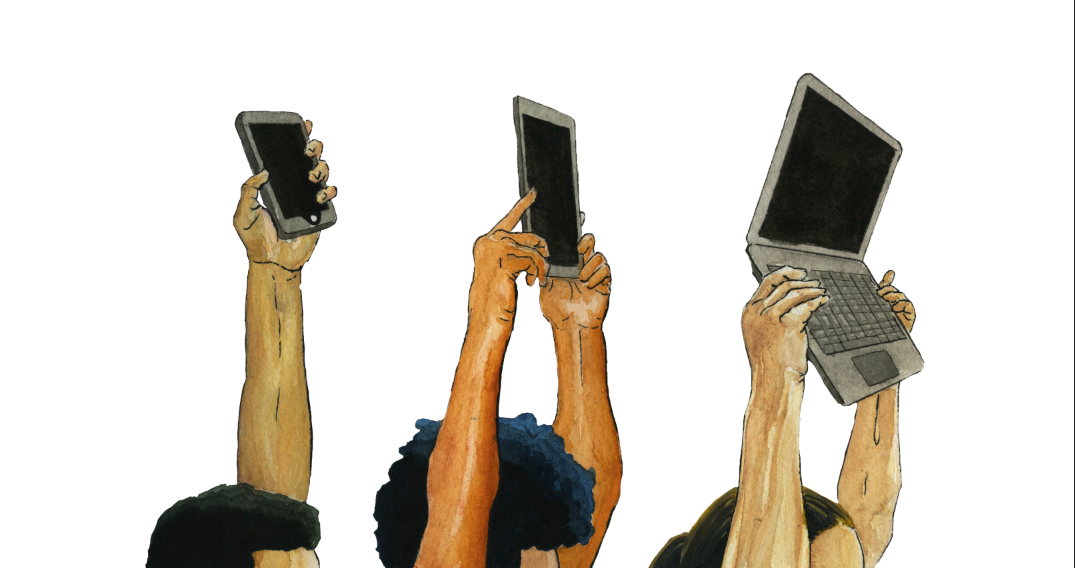People have always found ways to express their displeasure toward “The Man,” be it protesting in the streets, building barricades or even just refusing to move. Recently, however, people have been refusing to move in a much different light — this time the light of phone and computer screens — as more and more people take their protests to the web.
Slacktivism has attained a very negative connotation in a time where people are taking to the streets in protest movements like Black Lives Matter, the Women's March or the Dakota Pipeline occupation. In the case of the pipeline, this was one of the conflicts in which you saw both kinds of activism; while protesters were being attacked by the police, over a million people checked in to the Standing Rock reservation on Facebook. This made a lot of people question whether slacktivism was really helping, and with good reason. While people were out risking their safety to try and fight for what they believed in, others protested from the safety of their own homes.
The argument against slacktivism is a simple one: if people really cared, they would get out of the house and protest. However, the idea that anyone who wants to protest can simply go do so is fundamentally flawed. For starters, protesting is great, but as a college student I can’t afford to fly out to North Dakota just to protest. Money isn’t something that everyone can spare. Not to mention that protesting is just not feasible for many people who have disabilities, work constantly at jobs they can’t get time off from or simply do not have the means of transportation to protest where it really matters.
Slacktivism is less active — the literal meaning of the term is activism for slackers. Yet this kind of activism is not only accessible for those who cannot go out to protest, but also those who otherwise wouldn’t. When over a million people check into a place on Facebook, it isn’t like the police are just going to run away because they actually believe a million people traveled overnight to the reservation. The real effect is that friends of each of those million people saw it. That means that, if you average out how many people they are all friends with, the total amount of people who would have seen this massive online protest is more than the entire U.S. population.
As much as we like to believe the media covers every event in the world, few can say they are totally unbiased in how or what they cover. Protests in movements like the Civil Rights era succeeded because they got the eye of the country through the news. Back then, the news was how most people got their information — be it from a paper, television, radio or even other people who had heard the news. In modern society, many people get their information from social media. Even news agencies have accepted that the best way to communicate news is online.
In the case of the Dakota Pipeline, the massive amount of protestors brought the fight to the attention of people around the world, leading to tremendous outcry for the injustices the indigenous people were suffering. Before it was brought to the public’s attention, the protesters were being attacked violently because the police knew nobody was watching.
This is why we need slacktivism in the modern day. Slacktivism acts as a source of news, bringing the public eye to different events around the world. Facebook has a widget where it shows what everyone is talking about on a given day. Twitter has trending hashtags. This means that people are seeing what is going on in the world through other people, not just from news agencies. It may seem like slacking off and not actually putting in effort, but it spreads the word like few other things can. Bringing attention to a fight is just as important as the fight itself. It just goes along with the age-old adage: “If a tree falls in the forest and nobody's around to hear it, does it still make a sound?” If a protest happens and nobody hears about it, did it actually matter?
If a protest happens and nobody hears about it, did it actually matter?
The effects of slacktivism are greatly underappreciated, but in reality it already has accomplished so much. One of the biggest “slacktivist” movements, the ALS ice bucket challenge, is a prime example of this. Through the challenge, started by founder Pete Frates, people ended up funding a new surge into research of ALS that identified a new gene linked to the disease as well as provided support to organizations dedicated to helping those who already have it. This was not a protest that took going out on the streets — although I sincerely hope very few people did it on the comfort of their own couch with their computer in front of them — yet it still had major impacts.
This is not to say that in the future there will no longer be a need for people protesting in the streets. It is still an integral part of what defines the U.S., and is vital to the protection of the rights of people throughout the country and the world. The internet, however, has made it so that slacktivism and activism are becoming more and more codependent. Activists can’t make a difference if they aren’t heard, and slacktivists cannot have the same physical impact that makes protests so tangible. Even though we have come so far as a civilization, "The Man" is still getting the fight brought to him, no matter what. Although this time, he might lose a few Facebook friends in the process.








